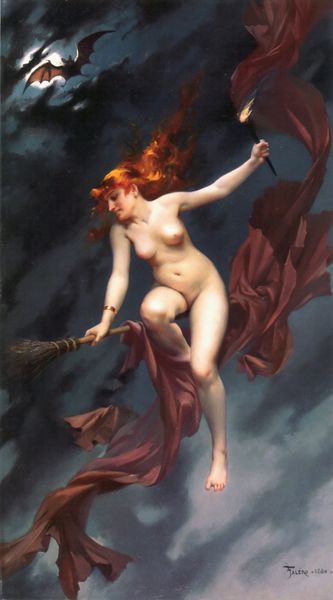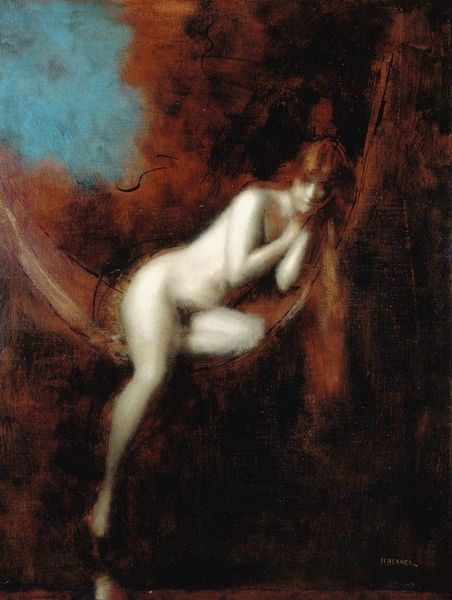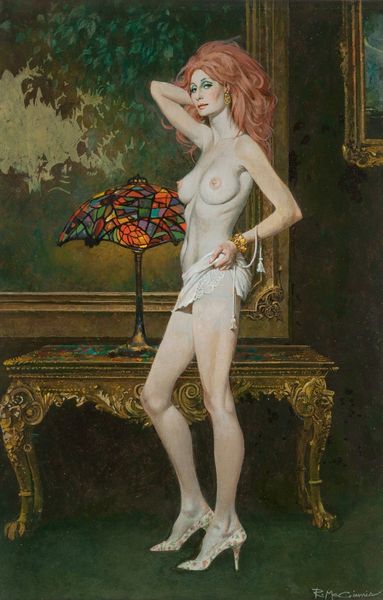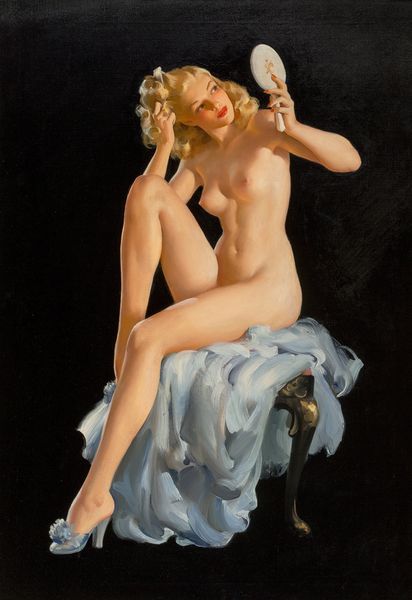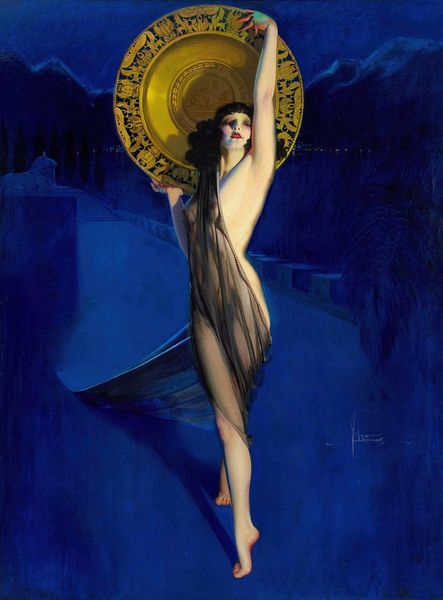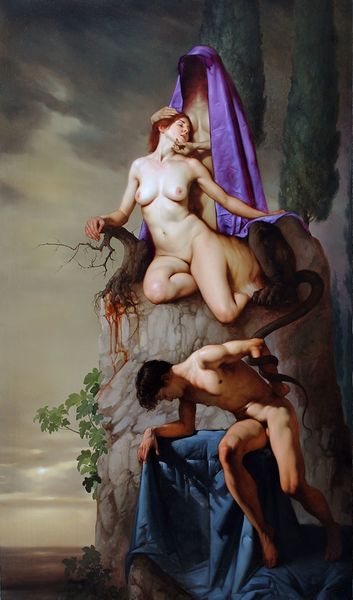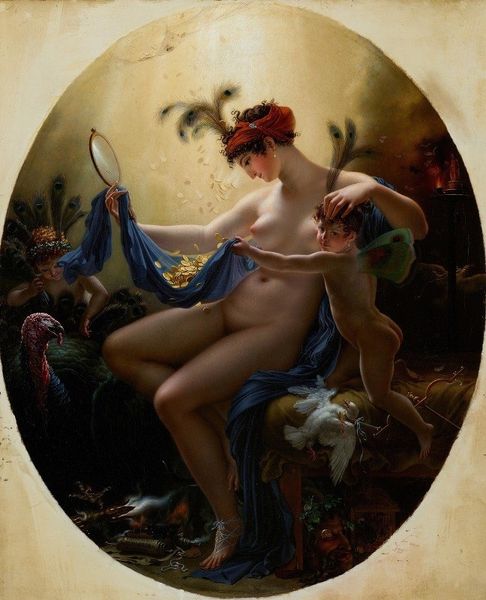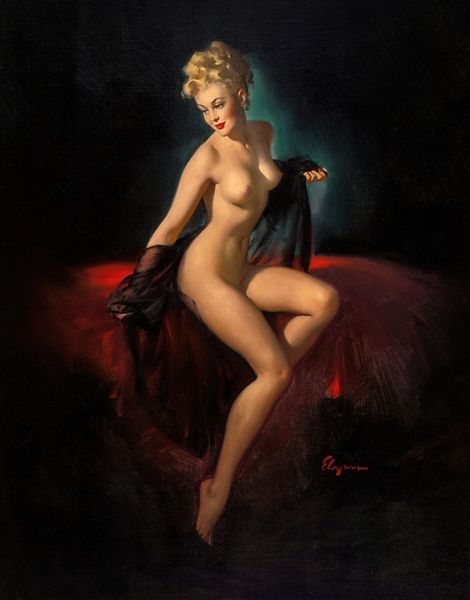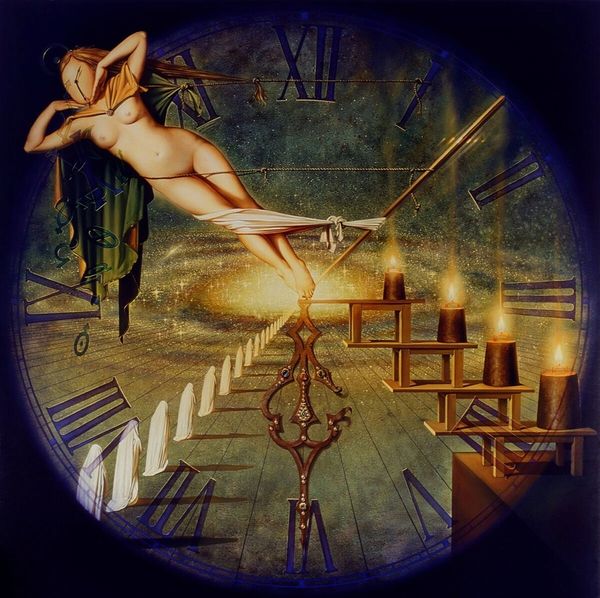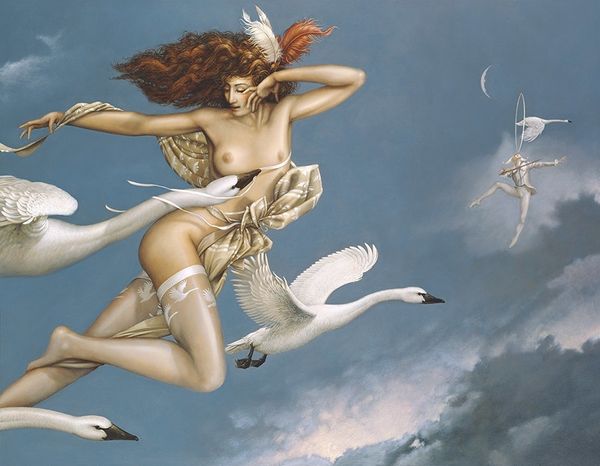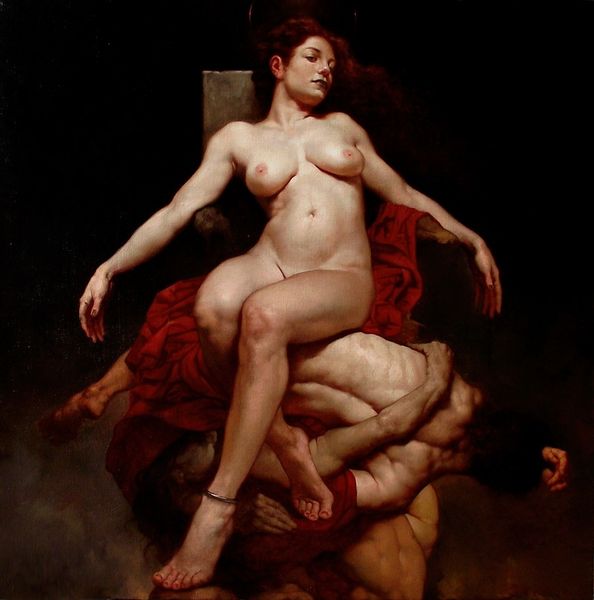
oil-paint
#
portrait
#
oil-paint
#
oil painting
#
orientalism
#
academic-art
#
nude
#
portrait art
#
erotic-art
Copyright: Public domain
Curator: Here we have "Le Vin De Tokai," an oil painting attributed to Luis Ricardo Falero. Editor: Well, immediately, it strikes me as rather decadent. The glowing, amber light against the dark backdrop... the whole thing is sensual and heady. Curator: It's quite characteristic of the erotic undertones found in much of Falero's work, aligning with trends within Academic art, especially his portraits exploring the female form. The composition clearly emphasizes her as a modern Venus figure, posed on and in relation to this oversized decanter, which dictates the subject matter. The wine seems to emanate from the decanter like some elixir. Editor: I am really interested in the glasses depicted on the table. What are those intricate carvings on them? Is the material actually glass or maybe a gilded metalwork imitating it? The production of objects of refinement, what does the presence of these costly items tell us about social contexts in which something like this appears? Curator: Exactly. It invites questions about how the viewer interprets its meaning. The woman, poised in what appears to be, in our contemporary setting, an awkward arrangement of flesh upon metal, can also been read through orientalist visual rhetoric—a continuity of objectifying representations of the ‘exotic other,’ often feminine. And there may even be specific Eastern European and/or Magyar traditions at play, hinted at in the Tokai wine mention. Editor: It speaks volumes about the tastes and desires cultivated during its time and the materials employed to embody them. You can almost trace the steps in creating that shine, reflecting a particular attitude towards craft and luxury. Curator: Falero taps into a set of historical archetypes to convey his imagery, mixing a little classical allusion with a dose of the "forbidden", drawing on historical precedent and cultural anxieties to do so. That sense of familiarity—altered just enough by a modern touch—allows for immediate entry to the painting’s overall affect. Editor: Seeing how it's laid down—the brushstrokes building volume, playing with light—grounds the painting within a tactile reality even amidst its ethereal imagery. That dialogue between material presence and evocative imagery interests me deeply. Curator: Absolutely, examining the ways symbolism intertwines with the physical manifestation is the crux of interpretation, isn't it? Editor: Indeed. Looking deeper beyond mere representation reminds us to acknowledge production that results in this aesthetic.
Comments
No comments
Be the first to comment and join the conversation on the ultimate creative platform.
